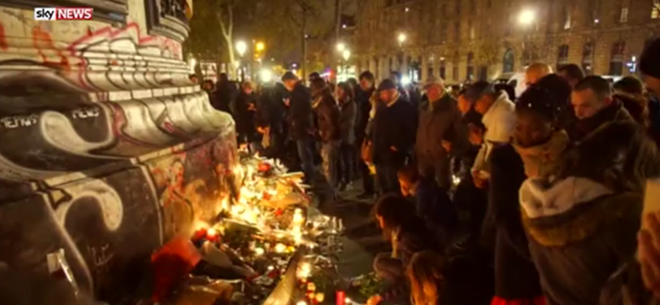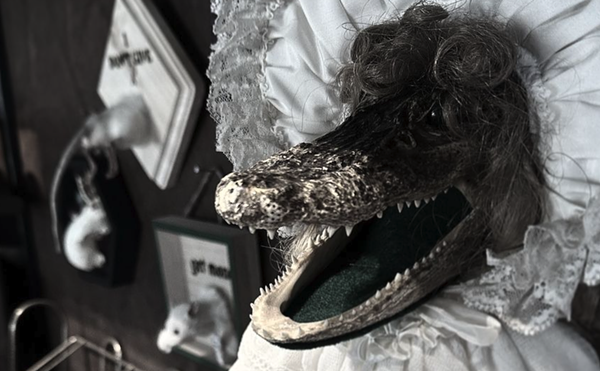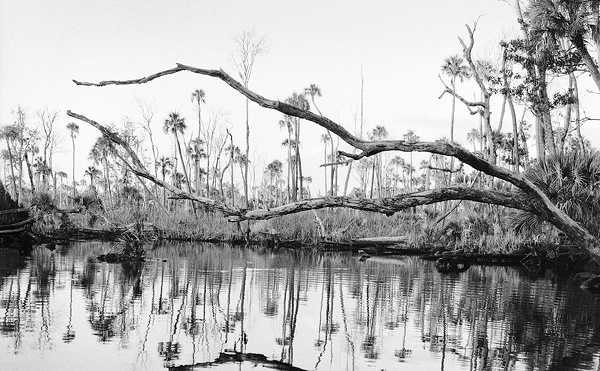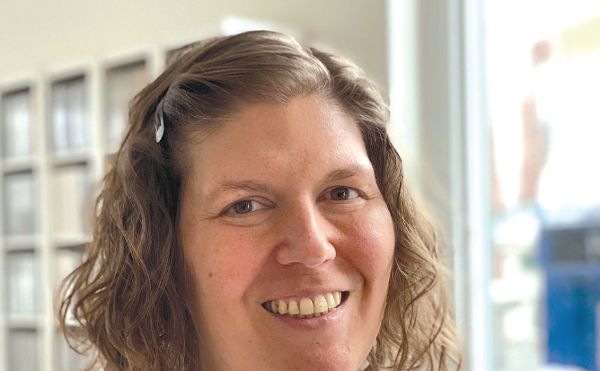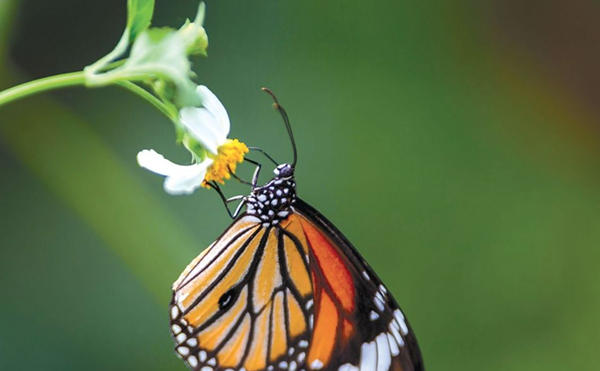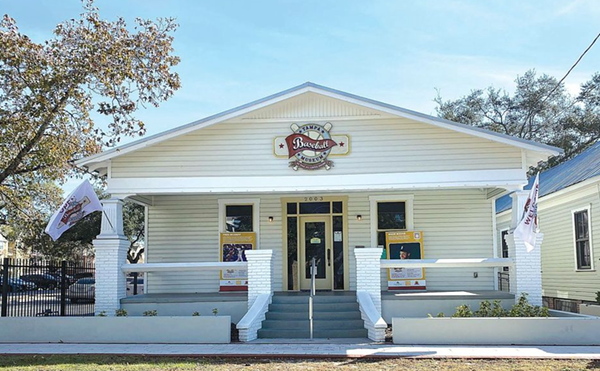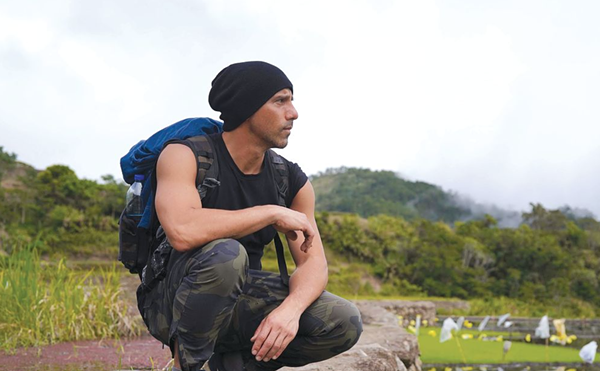Saturday morning, on a day when consciousness of the horrors in Paris threatened to block out thoughts of anything else, I heard an interview with choreographer Twyla Tharp on NPR (recorded before the Paris terror attacks) in which she talked about going back to work with her dancers in NYC the day after 9/11, only four days after the company had performed in the World Trade Center's outdoor plaza. (She also recalls that day in a journal, excerpted in the New York Times, that she wrote during her current cross-country tour.)
The story was familiar to me. I interviewed Tharp in New York shortly after the WTC attacks — I was living there at the time, and was in attendance at that WTC performance. The feelings she expresses now were similar to what she told me in 2001.
"Of course the magnitude and implications of this causes one to look for priority," she said then. "Should you be outside doing relief work, or should you be working at what you know how to do?"
I was pondering similar questions during the launch of BEACON, a new dance/performance series that premiered Saturday night at the Palladium in St. Pete. How do we sit and watch dance when the world is falling apart? How do artists continue making art in the wake of the inconceivable?
For Tharp, the answer was, if not easy, then inevitable: "We don't have a choice," she told me. "We can't stop doing what we do."
And, fortunately for the audience (and, I have no doubt, for the performers), BEACON showed us why art — and the particular art form of dance — are so necessary. At the end of the program, after a moment of silence for the victims and survivors in Paris, co-founder Lauren Slone said that the series' ambition is to foster "a new way of thinking about human dignity in every single body" — a mission that the evening resoundingly carried out.
Slone and co-founder Helen Hansen French want to bring that message home to St. Pete. The two met while judging student dance programs last year at USF. French, a grad of the Pinellas County Center for the Arts (Gibbs High School), went on to Juilliard and NYC's Buglisi Dance Theatre, and recently returned to St. Pete to live. Slone is an FSU grad and professional dancer/choreographer/teacher now based in NYC. Both shared dismay at the lack of dance opportunities in the Tampa Bay area, and with BEACON they hope to remedy that.
The opening work in Saturday night's program, for waking, established a Florida connection and a casual, DIY vibe. Co-creators/performers Slone and Loren Davidson brought potted tropical plants onstage, and from time to time Slone would move a plant, change the music on the onstage laptop or shift the direction of the footlights to create shadows on the back wall. Dressed in loose tunics and track pants, moving to a soundtrack that included r&b and what sounded like the early rumblings of an earthquake, the two dancers faced off from time to time as if taking measure of one another, at other times seemingly puzzling their way through the jungle of shadows and light. Slone — a tall, rangy dancer with elegance and swagger — made a particularly strong impression.
At the end of this piece, the two dancers, rather than taking their bows from the stage, moved into the audience and bowed to each other. The choice accented what for me was a drawback of for waking — a kind of insularity, a sense that this was an internal dialogue between dancers, not a journey that invited us along.
But nothing else in the evening shared that quality. The second piece on the program — Where thou art, that is home by choreographer Kellie Harmon of the new St. Pete troupe ROGUEdance — seemed at first to deal with body as commodity, with each of the five dancers walking to the lip of the stage and displaying aspects of their bodies to the audience (a ribcage, an open palm) as a voiceover talked about the price of art. Compellingly performed by Harmon, Crystal DelGuidice, Carleigh Gee, Colleen Hanlon and Sean McDonald, the movement then morphed into interweaving partnerships that suggested domination, defeat and ultimately a mutuality of support. The inspiration, a poem by Emily Dickinson, includes the passage "What Thou dost—is Delight—/Bondage as Play—be sweet—/Imprisonment—Content—/And Sentence—Sacrament—/Just We two—meet—"; the dance touched on all these phases of connection, understandable either as surrender to another person or to a demanding art form, or both.
The second half of the program began with a dancer with his back to the audience — but what a back! Jahrel Thompson — torso bare, wearing a voluminous floor-length red velvet skirt that he manipulated with the panache of Martha Graham — was the sole dancer in Joan, choreographed by USF faculty member Michael Foley. Inspired by the final hours of Joan of Arc, the solo has been performed by both women and men, but as embodied by an African-American male dancer — especially one with the power and precision of Thompson (a company member of Sarasota Contemporary Dance) — the movement takes on a multitude of meanings. Arm outstretched, as if plucking visions from the air, sweeping the skirt upward and around, suggesting both wings and entrapment, kneeling and facing the audience with a simple, imploring gaze, Thompson made an indelible impact.
The final piece of the evening, Helen Hansen French's When in the Within, lived up to her stated goal of creating a "movement love letter to St. Petersburg." With poetic text by Jan Neuberger (read beautifully by Roxanne Fay) and an at-times overbearing score (Arnalds, Scriabin and Korzeniowski), the piece evoked not only the history of a certain waterfront city but also the arc of a dancer's career. Paula Kramer, a veteran local dancer/teacher who oozes elegance even doing something as simple as crossing her leg, sat on a bench surrounded by sand, which she traced with her foot and then poured in and out of her hands, connecting with the landscape but also seeming to mourn her departure from it. As she exited, she left a trail of sand for French — an exquisite mover with a gamine's cap of bright red hair — who created her own path. A projection of an iconic green bench materialized behind her as the narrative moved into a description of early morning in the park, with French embodying an idyll of children playing and mothers pushing prams. A suitcase ballet followed, with all three performers toting and arranging baggage on the stage — baggage which French must eventually leave behind as her city "wakes to a different dawn." It's all a bit literal, yes, but charming and ultimately quite moving — a heartfelt expression of French's affection for the St. Pete that was and a commitment to the city it could be.
What she and Slone gave us as well, on a night when we were all too conscious of the ugliness in the world, was a reminder of the beauty and dignity around us, too.

